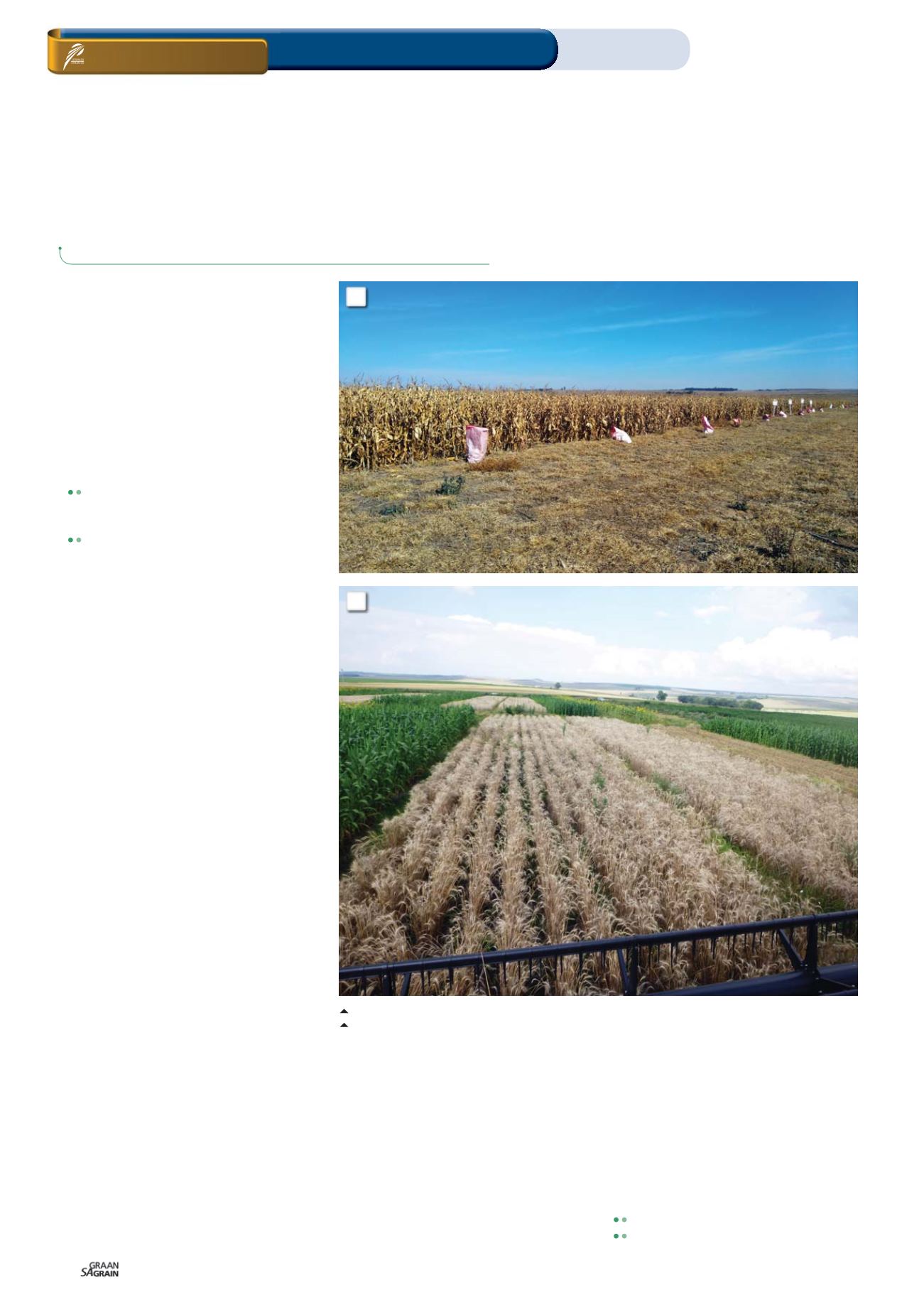

Maart 2018
86
Spotlight on second year’s CA results
C
onservation Agriculture (CA) is a
holistic approach to the improve-
ment of soil health and the sustain-
ability of crop production. Grain SA,
in collaboration with the Riemland Farmers
Study Group, VKB and ARC-Small Grain,
is involved in on-farm CA trials in the Reitz
district, which aim to adapt and promote
CA practices in the specific area.
The research focuses on two aspects that
are both relevant in adapting CA systems to
local conditions, namely:
The interaction of row width and plant
population on maize (
Photo 1
) and soy-
bean yields.
The evaluation of the viability of crop
sequences in six rotation systems.
The Maize Trust funds the project, which
commenced in the 2015/2016 season.
Results of the 2017 season
Row width and plant
population trial
The trial was conducted on the farm Van
Rooyenswoning, in the Reitz district. Three
row widths, 50 cm, 76 cm and 100 cm,
were included. Plant populations for maize
were 40 000, 60 000 and 80 000 plants per
hectare and 150 000, 250 000, 350 000 and
450 000 plants per hectare for soybean.
The trial design was in the form of two
factorial blocks, which included three rep-
licates of the randomised treatments of
each crop. The maize and soybean blocks
were rotated annually.
Graph 1
summarises
the monthly rainfall from January 2015 to
December 2017. A total of 114 mm of rain
occurred before the planting date of both
crops on 23 November 2016. However,
the average plant emergence was disap-
pointingly low with 68% for maize and 71%
for soybean.
Harvesting of the soybean and maize took
place on 20 April last year and 16 May last
year respectively. The yield results for the
2017 season are summarised in
Table 1
and
Table 2
. An average yield of 7,53 t/ha was
realised for maize and the soybean block
produced an average of 2,92 t/ha.
Table 1 shows that plant population had
no influence on the maize yield, while the
50 cm row widths had a significantly higher
yield than the 100 cm rows. The yield of the
treatment combinations showed signifi-
cant differences, with the combination of
80 000 plants/ha and 50 cm row spacing
producing the highest yield.
Row width as well as plant population
had no impact on the soybean yields
(Table 2). Significant differences were ob-
served in the treatment combinations and
the 350 000 plant population produced
the highest yield in combination with the
100 cm row spacing. More research is
needed to confirm the results.
The rotation trial to evaluate
the viability of crop sequences
Two crop rotation trials were planted on the
farms Van Rooyenswoning and Emden in
the Reitz district (
Photo 2
).
The trial layout was randomised blocks,
with four replicates of the following six crop
rotation treatments:
Soybean
maize
Soybean
wheat
sunflower
maize
ON FARM LEVEL
Conservation agriculture
CA trials / Reitz
LIENTJIE VISSER
and
WILLEM KILIAN,
ARC-Small Grain,
Bethlehem,
JACQUES VAN ZYL,
VKB and
DR HENDRIK SMITH,
CA facilitator, Grain SA
1: The maize block in the row width and plant population trial.
2: Different plots in the crop rotation trial.
1
2
















